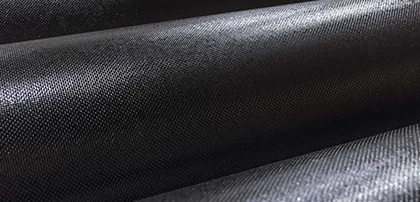Introduction to Prepregs
In the world of composite materials, prepregs play a crucial role and offer a variety of advantages for different industries. These are pre-impregnated fiber composites in which the reinforcing fibers are already impregnated with a resin but have not yet fully cured. These “semi-finished” materials allow for easy handling and processing, as the resin does not drip or flow, but is also not fully cured.
Manufacturing of Prepregs
The manufacturing of prepregs is a complex process that requires specialized techniques and procedures to achieve the desired properties. This section explains the basics of resin infusion, the advantages and disadvantages of this process, the structure of prepregs, curing methods, and specific manufacturing procedures.
Structure of Prepregs
Prepregs consist of a matrix of resin and reinforcing fibers in a pre-impregnated form. The reinforcing fibers can be made of various materials such as carbon, glass, aramid, or natural fibers, depending on the specific application requirements. The structure of a prepreg allows precise control of the material composition and tailored adjustment of mechanical, thermal, and chemical properties.
Coating Techniques for Prepregs
In dip coating, the prepreg material is coated by dipping it into a resin melt or solution to achieve an even coating. The material is then withdrawn from the solution, and excess resin is stripped off. This method enables precise control of the resin amount and an even coating of the prepreg.
In kiss coating, the resin is applied to the prepreg material by contact with a coating roller or cylinder. The coating roller is guided just above the surface of the prepreg, applying only a thin layer of resin. This method allows precise control of the coating thickness and an even distribution of resin on the surface of the prepreg.
Both dip coating and kiss coating are important techniques in the manufacturing of prepregs as they enable precise control of the resin amount and even coating of the material. This contributes to improving the quality and performance of prepregs and meeting the requirements of specific applications.
Follow-up process: Curing Methods
The curing of prepregs typically occurs through heat treatment, where the resin is activated by heating, initiating a chemical reaction that leads to curing. This process can be performed using autoclaves, ovens, or infrared radiation to achieve the desired mechanical properties of the final product. However, it is important to note that prepregs are not fully cured. This allows for the possibility of chemically bonding individual layers during further processing of the prepregs.
Specific Manufacturing Processes for Prepregs
There are various specific prepreg manufacturing processes, including laminating, winding, and compression molding. Each of these processes offers unique advantages and is suitable for specific applications, depending on the geometric requirements, materials, and desired properties of the final product. Choosing the right manufacturing process is crucial for the quality and performance of the prepreg.
Components of Prepregs
The composition of prepregs consists of various components that collectively determine the desired properties of the composite material. In this section, we will take a closer look at the two main components of prepregs: the fiber types and the matrix materials. For more information on the most common fibers and matrix materials, please refer to our article “The World of Composites.”
Properties of materials made from Prepregs
The properties of prepregs play a crucial role in their performance and applicability across various industries. In this section, we will examine the key properties of prepregs, including mechanical properties, electrical properties, chemical properties, and thermal conductivity.
Mechanical Properties
The mechanical properties of materials made from prepregs determine their strength, stiffness, toughness, and other characteristics that influence their performance under load. These include, but are not limited to:
- Tensile Strength: The maximum tensile stress the material can withstand before failing.
- Flexural Strength: The ability of the material to withstand bending forces without breaking.
- Impact Toughness: The ability of the material to absorb impacts and shocks without failing.
- Stiffness: The material’s resistance to deformation under load.
The mechanical properties of materials made from prepregs can vary depending on the fiber type, matrix material, fiber volume fraction, and fiber arrangement.
Electrical Properties
The electrical properties of materials made from prepregs determine their conductivity, dielectric constant, and other characteristics that influence their suitability for electrical applications. These include, but are not limited to:
- Conductivity: The ability of the material to conduct electrical current.
- Dielectric Constant: The ability of the material to store electrical fields.
- Insulation Resistance: The material’s resistance to the flow of electrical current.
The electrical properties of materials made from prepregs can vary depending on the matrix material and fiber type and are often influenced by additives or coatings.
Chemical Properties
The chemical properties of materials made from prepregs determine their resistance to chemical influences such as acids, bases, solvents, and other substances. Important chemical properties include:
- Resistance to Acids and Bases: The ability of the material to withstand exposure to acidic and basic substances without degrading.
- Resistance to Solvents: The ability of the material to resist dissolution or damage when exposed to solvents.
- Corrosion Resistance: The ability of the material to resist corrosion, which is especially important in harsh environments.
- Chemical Stability and Inertness: The material’s ability to maintain its properties and not react with other chemicals under various conditions.
The chemical properties of materials made from prepregs depend on the choice of matrix material and, if applicable, additional coatings or treatments.
Thermal Conductivity
The thermal conductivity of materials made from prepregs determines their ability to transfer and distribute heat. This is particularly important in applications requiring heat dissipation or insulation. The thermal conductivity of materials made from prepregs can vary depending on the fiber type, matrix material, and fiber arrangement and is often influenced by additives or coatings.
Further Processing Options for Prepregs
After manufacturing, prepregs can be further processed into various forms and products to meet the requirements of specific applications. Two common further processing methods are the production of sheets and tubes.
Sheets:
Future of Prepregs
The future of prepregs faces various challenges while also offering diverse opportunities for advancements and innovations. Some of the challenges include:
- Cost: Although prepregs are widely used due to their high-quality properties and performance advantages, they often remain more expensive than conventional materials. Reducing manufacturing and processing costs is a significant challenge for the broader acceptance of prepregs in various applications.
- Environmental Impact: The production of prepregs often requires the use of resins and chemicals that can have environmental impacts. Developing more environmentally friendly manufacturing processes and materials is therefore an important aspect for the future of prepregs.
- Processing Complexity: Processing prepregs requires specialized equipment and expertise, which can hinder their introduction into new application areas.
Despite these challenges, prepregs offer a variety of opportunities for future developments and applications. These include:
- Lightweight Construction: Prepregs play a key role in lightweight construction, which is becoming increasingly important in various industries, including aerospace, automotive, and construction. The development of lighter yet more powerful prepregs continues to advance.
- New Applications: With advancing technology and innovation, new applications for prepregs are being explored that were previously unattainable. This includes areas such as renewable energy, electronics, medical technology, and more.
- Sustainability: The development of more sustainable prepregs with reduced environmental impact and resource consumption offers an opportunity to reduce environmental pollution while opening up new markets.
Conclusion
Prepregs have a significant impact on technological progress in the field of composite materials and have been indispensable in various industries such as aerospace, motorsports, automotive, and railway industries for decades. The fiber textiles pre-impregnated with reactive resin offer a variety of properties that can be precisely tailored through different fiber-matrix combinations. With a wide range of available combinations, prepregs can provide customized solutions for specific application cases.
Product – Selection of Prepregs from Von Roll
Our Product
PREPREG Carbon
Resin Material: Epoxy
Reinforcement: Carbon
Applications: Doctor Blades Mobility Railway and traffic engineering Trains, ships, aircrafts
Discover the productOur Product
PREPREG Vetronite G11
Resin Material: Epoxy
Reinforcement: Glass fabric
Applications: Electrical insulation, High temperature resistant machine parts, Chemical engineering, Aeronautics and aerospace, Slot wedges
Discover the productOur Product
Prepreg Vetronite FR-5 HF CTI 600M
Resin Material: Epoxy
Reinforcement: Glass fabric
Applications: Railway and traffic engineering, Transformers, Low smoke parts in trains, ships and aircraft
Discover the productOur Product
Prepreg Vetronite EGS 619
Resin Material: Epoxy
Reinforcement: Glass fabric
Applications: Electrical insulation, Test adapters, Telecommunication
Discover the product






